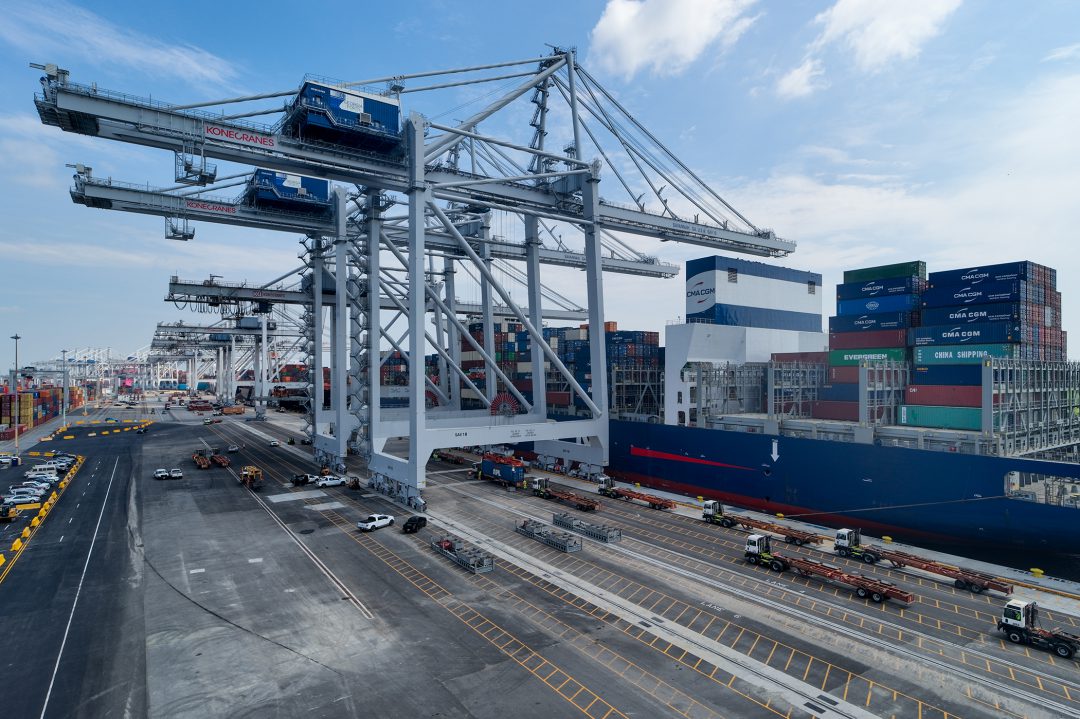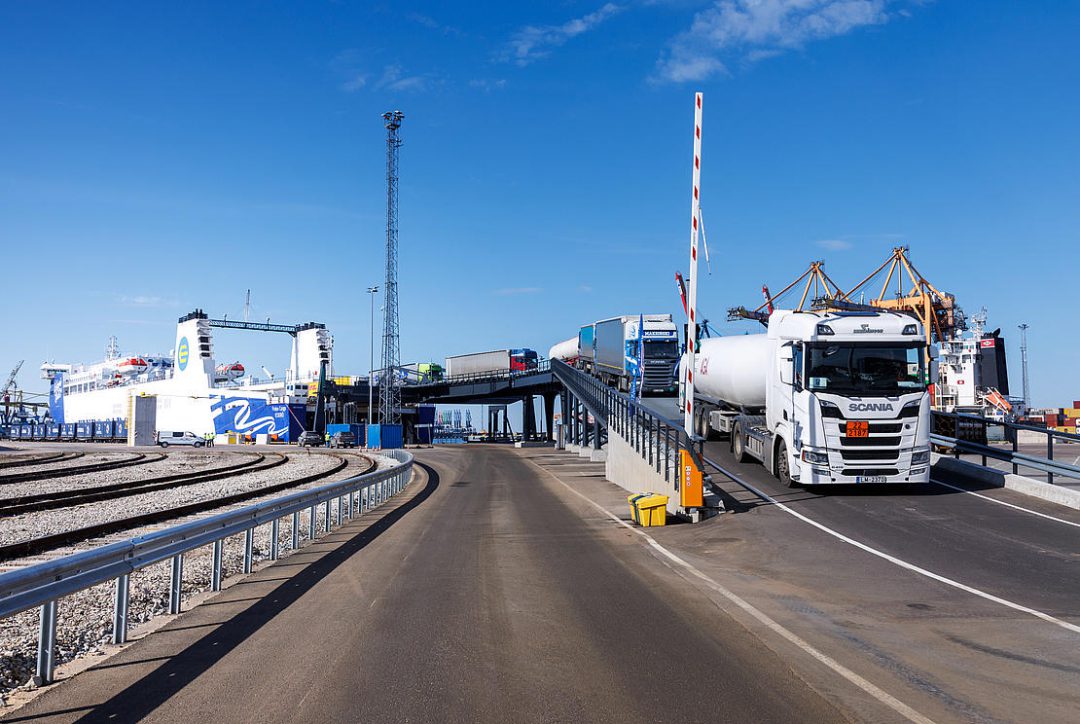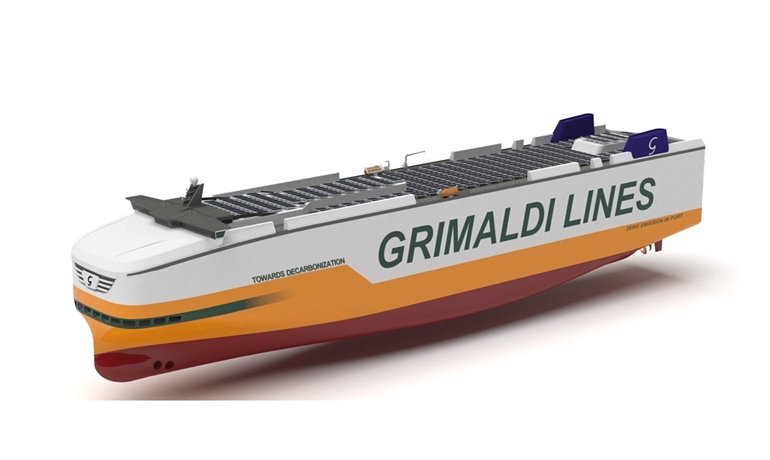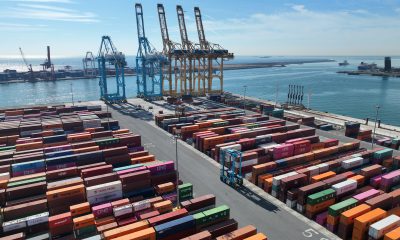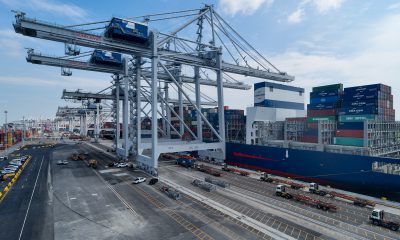The Georgia Ports Authority handled record Roll-on/Roll-off volumes in Fiscal Year 2023, at more than 723,500 units, an increase of 18 percent or nearly 109,000 units over the previous year.
“The Port of Brunswick achieved strong growth in the import and export of heavy machinery, while auto manufacturers’ improved microchip supply also meant an increase in vehicles,” said GPA President/CEO Griff Lynch. “I’d like to thank our customers for their continued confidence in Brunswick as a superior gateway to the U.S., and the auto processors for the world-class service they are providing.”
Ro/Ro imports were up by 99,000 units year-over-year, or 24 percent, while exports increased 11,500 units, or more than 7 percent. Besides expansion of existing business, GPA also added Nissan as a Brunswick customer in FY2023. Colonel’s Island Terminal now handles Nissan imports from Japan and Mexico.
According to the most recent PIERS data, the Port of Savannah achieved 11.2 percent market share in container trade among U.S. ports on the East, West and Gulf coasts through April, its highest ever.
“This continues a trend stemming from the U.S. Southeast’s fast-growing population, increased domestic production and a shift in overseas manufacturing toward India and Southeast Asia, favoring delivery via Savannah,” Lynch said. “I’d like to commend GPA employees, and our partners at Gateway Terminals and the International Longshoremen’s Association for their outstanding work during our second busiest year ever.”
A total of 5.4 million twenty-foot equivalent container units crossed GPA docks in FY2023, down 6.7 percent or 387,000 TEUs compared to FY2022, GPA’s all-time high. However, when compared to pre-pandemic volumes of 4.5 million TEUs in FY2019, GPA’s performance achieved an increase of 20 percent. Its compound annual growth rate since FY2019 is 4.7 percent per year.
“Georgia Ports’ steady long-term growth is thanks to outstanding customer service and superior global connections,” said GPA Board Chairman Kent Fountain. “These are certainly contributing factors behind Area Development magazine ranking Georgia the top state for doing business since 2014.”
Record trade at the Appalachian Regional Port was another highlight in FY2023. The inland terminal handled its highest volumes ever, at 33,700 rail lifts, an increase of more than 18 percent or 5,200 containers.
To prepare for future demand, GPA is investing $1.9 billion in current infrastructure projects. Enhancements include renovations to Berth 1 at Garden City Terminal, increasing berth capacity there by 25 percent. An improved Berth 1 reopened to vessel service July 20, providing faster turn times for ocean carriers.
A new transload facility will deliver greater speed and flexibility for customers in cargo handling, while the Garden City West development adds 100 acres of long-term storage available at lower cost than in the regular container yard.
Upgrades now under construction at the Port of Brunswick include 640,000 square feet of new processing space across five new buildings, and 122 acres of additional auto storage. The new acreage will increase Ro/Ro capacity from 1.2 million to 1.4 million vehicles per year. Two near-dock warehouses and three buildings on the south side of Colonel’s Island start coming online in August. GPA has also won federal approval to construct a fourth Ro/Ro berth at Colonel’s Island. Currently in the engineering phase, Berth 4 will better accommodate carriers in the 7,000-vehicle class.
“New business and new capacity are establishing the Port of Brunswick as the nation’s premier auto port,” said Fountain. “Already the largest U.S. terminal in current acreage and room to grow, Colonel’s Island offers exporters a broad ocean carrier network, and provides importers easy access to the region’s dealerships.”
Also in Brunswick’s favor: It is well positioned for short-sea trade out of Mexico.
“As manufacturers continue to invest and ramp up production in that region, Colonel’s Island is in a strong position to capitalize on this trade lane,” said GPA Chief Commercial Officer Cliff Pyron. “We have already begun to see the benefits of Brunswick’s first port-of-call status from Mexico.”

